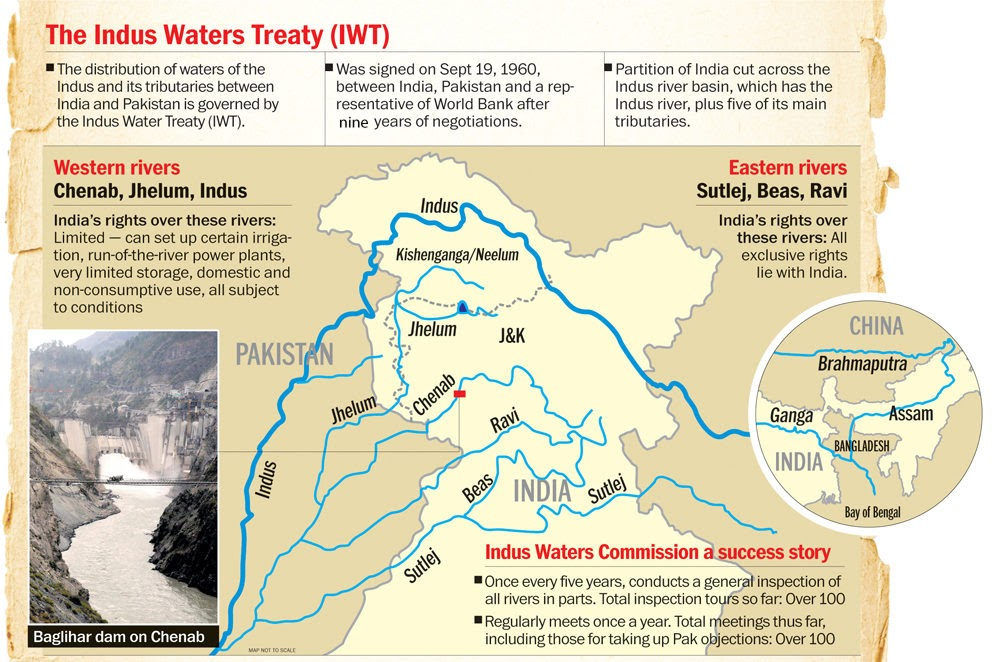Jammu & Kashmir
Indus Water Treaty
- 19 Sep 2024
- 4 min read
Why in News?
Recently, India suspended meetings of the Permanent Indus Commission (PIC) amid demands to renegotiate the 64-year-old Indus Water Treaty (IWT) with Pakistan.
Key Points
- Indus-Water Treaty (IWT): Signed in 1960, governs the sharing of six Himalayan rivers. It provides a dispute resolution mechanism, involving the Permanent Indus Commission (PIC), neutral experts, or a court through the World Bank.
- The treaty allocates water from the eastern rivers (Beas, Ravi, Sutlej) to India, while Pakistan has rights over the western rivers (Chenab, Indus, Jhelum). India can use the western rivers for limited irrigation and power generation.
- The Dispute: The ongoing dispute centers on the Kishanganga (330MW) and Ratle hydropower (850MW) projects in Jammu and Kashmir. India and Pakistan have different interpretations of the treaty's dispute resolution process.
- Kishanganga project: Located in Bandipore, Jammu and Kashmir, is a run-of-the-river hydroelectric project with a capacity of 330 MW.
- It diverts water from the Kishanganga River (Neelum River in Pakistan) to a power plant in the Jhelum River basin through a tunnel.
- Pakistan objected, citing concerns over water flow, but in 2013, The Hague’s Permanent Court of Arbitration allowed India to proceed with certain conditions.
- World Bank’s Role: Limited to procedural matters like appointing experts and facilitating meetings. It has paused and resumed processes based on mutual cooperation efforts between India and Pakistan.
- Permanent Indus Commission: Mechanism for cooperation and information exchange between India and Pakistan, with a Commissioner from each country.
- Commissioners of both countries are mandated to meet every year.
- Dispute Resolution: The dispute redressal mechanism provided under Article IX of the IWT is a graded mechanism. It’s a 3-level mechanism.
- Questions: These are simpler technical or operational issues handled by the Permanent Indus Commission (PIC) during regular meetings between the commissioners of both countries.
- Differences: If unresolved at the PIC level, differences are escalated to a Neutral Expert appointed to resolve technical disputes, such as design or operational concerns.
- Disputes: Major conflicts are referred to a Court of Arbitration, an ad hoc tribunal to handle larger disputes concerning the Treaty’s interpretation or implementation.
Permanent Court of Arbitration
- It was established in 1899 and is headquartered in The Hague, Netherlands.
- Purpose: It is an intergovernmental organization dedicated to serve the international community in the field of dispute resolution and to facilitate arbitration and other forms of dispute resolution between States.
- It has a three-part organizational structure consisting of:
- Administrative Council - to oversee its policies and budgets,
- Members of the Court - a panel of independent potential arbitrators, and
- International Bureau - its Secretariat, headed by the Secretary-General.
- Funds: It has a Financial Assistance Fund which aims at helping developing countries meet part of the costs involved in international arbitration or other means of dispute settlement offered by the PCA.





